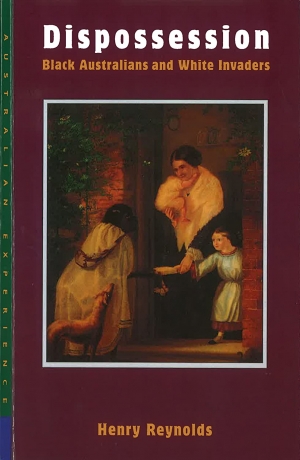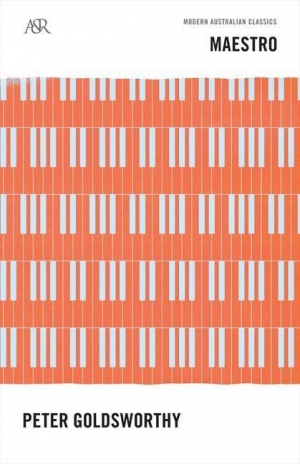Archive
In this new book, Beverley Farmer quotes George Steiner: ‘In modernism collage has been the representative device.’ The blurb calls A Body of Water a montage. Well, it’s a difficult book to describe. It’s not a pasting together, there’s no smell of glue about it. Nor is it put together, plonk, thunk, like stones. It’s rather, in her own words, an interweaving.
... (read more)Bookseller Terri-ann White surveys the publishing scene in Perth and Fremantle, for several decades now torn by a battle for funds but recently showing encouraging signs of optimistic development.
Since 1975 and the establishment of the Fremantle Arts Centre Press, the writing community of Perth has benefited enormously from the focus and support it has offered. Whether individual writers have been published by it or not, in the most isolated city in the world the possibilities have been opened up. The Press has clearly been responsible, as a developmental publisher, for encouraging and promoting creative writing, biography, and regional history writing in WA, and for opening up resources and opportunities for writers to work closely with good editors, good advice, and plenty of time to learn and hone work into a publishable form.
... (read more)The notion of what it means to be different, and the question of how we know we are different, invites us to consider statistical method and its implications for our society, for only in the context of what is normal can an individual be assessed as different. Mathematically, it would appear that the relationship between an individual and a society composed of individuals is by no means straightforward, a subtlety increasingly lost on those citizens who, armed with degrees in the social sciences, emerge from our tertiary institutions to study, rehabilitate, and edify us.
... (read more)Michael Sturma reviews 'Dispossession: Black Australians and white invaders' by Henry Reynolds
Anyone interested in Aboriginal history or race relations will probably be familiar with the work of Henry Reynolds. His books include The Other Side of the Frontier (1982), Frontier (1987), and The Law of the Land (1987). This latest book is a collection of documents, ones that provided much of the source material for Reynolds’s earlier works. In this book, he tell us in the preface, ‘our forebears speak for themselves and speak in many voices’.
... (read more)The morning ABC radio program AM is not a book program. But occasionally we’re pleased to take the opportunity to broadcast the story of a new book, particularly when it comments on Australian public affairs. When John Pilger’s A Secret Country was published, AM ran an interview with the author which was unusually long for us, some five or six minutes. The response was remarkable. In my two years as presenter of the program, I can’t recall as much listener interest in any item, judging by the number of telephone enquiries about the book we received in subsequent days.
... (read more)Deborah Bird Rose reviews 'Encounters in Place: Outsiders and Aboriginal Australians' by D.J. Mulvaney
Professor Mulvaney’s thematic history of encounters between outsiders and Aboriginal Australians is developed through a discussion of events located in specific places. He has selected places which are in the Register of the National Estate (many of which he initially nominated) or are being considered for inclusion. The places, then, are by definition part of Australia’s cultural heritage, and an important focus of the book is to illuminate some of the types of events which have shaped Australian society.
... (read more)McDonald’s latest novel, Rough Wallaby, carves out a fascinating position in contemporary literature: an intricately constructed, fast paced yam drawing its narrative from a contemporary Australian myth, the Fine Cotton race horse switch. The intriguing aspect of Wallaby is that it makes no pretence at anything but a great big yam. The yam in Australia is in a position of disgrace, not among readers, but in the academic-critical club. The story is no longer literature, it seems. There have to be other surreptitious elements recognized and codified by the literary fraternity.
... (read more)Tom Keneally used to be a fashionable writer, but not anymore, at least not with the critics, though readers continue to read him. Critical concern today is with aesthetics rather than ethics, theory rather than practice. Towards Asmara is therefore not likely to get a great deal of serious attention. This is a pity because it raises some weighty issues, and the loss is the critics’!
... (read more)The current literary enterprise of this country is greatly indebted to Peter Goldsworthy. Yet his name is not one of those that trip off the reflex tongues of journalists, and not only journalists. He has only recently started to appear in the anthologies. He is granted all of two lines in Ken Gelder and Paul Salzman’s jerky traverse of our recent fiction. Yet his accomplishment in a diversity of genres is unique.
... (read more)Robert Adamson has as secure a reputation as any poet in this country apart from Les Murray. He rose to prominence in the latter part of the 1960s at the same time as John Tranter, but his affinity was not with the New York poets like John Ashbery and Frank O’Hara, but with the poets of Black Mountain: Charles Olson, Gary Snyder, and, most particularly, with the late Robert Duncan.
... (read more)







